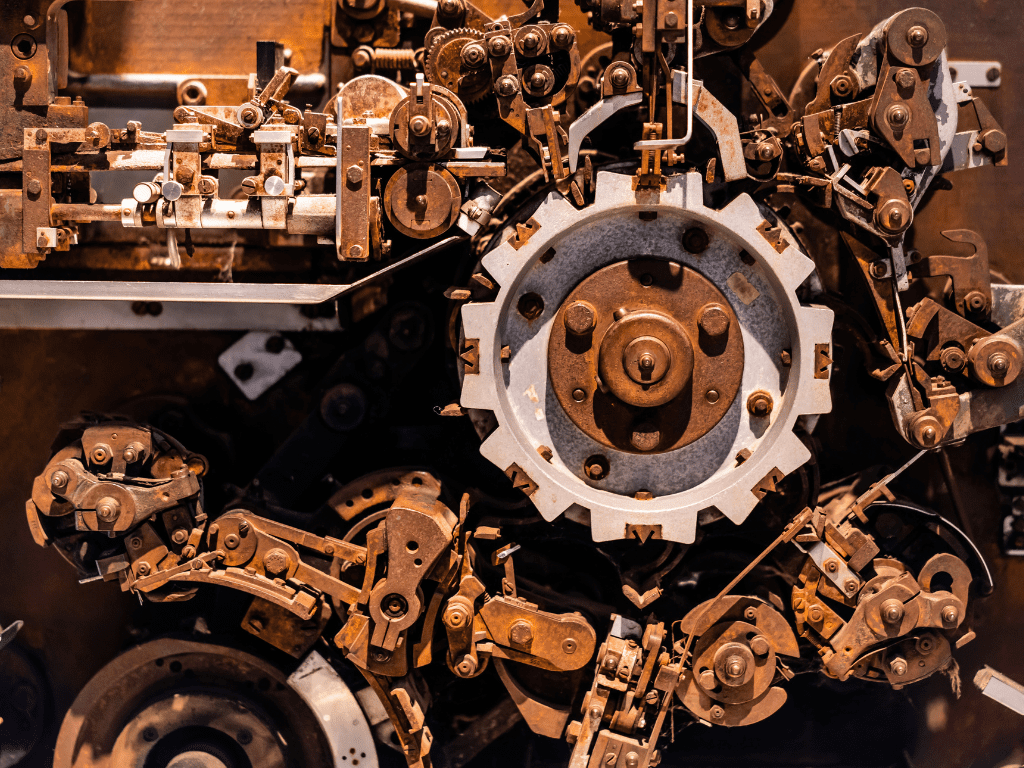Heavy equipment, ranging from construction machinery to agricultural and mining equipment, endures harsh conditions that expose it to heavy dirt, grease, and grime. Keeping such machinery clean is vital to ensure efficient operation, extend its lifespan, and reduce the likelihood of breakdowns. Cleaning not only enhances performance but also reduces maintenance costs. In this guide, we will discuss the steps involved in cleaning heavy equipment effectively and highlight why using the right products, like AQUAQUICK 2000, can make a significant difference.
Why Is Cleaning Heavy Equipment Important?
Heavy equipment accumulates layers of dirt, oil, and debris, which, if left unchecked, can obstruct components and reduce operational efficiency. Regular cleaning prevents:
- Corrosion and Rust: Dirt and moisture can lead to corrosion, impacting both the appearance and functionality of equipment.
- Overheating: Debris and grease can clog cooling systems, leading to overheating.
- Operational Hazards: Clean equipment improves visibility and safety for operators.
- High Repair Costs: Maintaining a clean machine can help catch wear and tear early, saving on costly repairs in the future.
For comprehensive cleaning, following a structured process with the right tools and cleaning agents is crucial. Let’s dive into the essential steps.
Step 1: Pre-Cleaning Preparations
Before starting, ensure the equipment is ready for cleaning:
Safety First
- Turn Off Equipment: Switch off the machinery and disconnect any power sources.
- Cool Down Components: Avoid cleaning machinery that’s been in use recently, as hot surfaces can react poorly to certain cleaning agents.
- Wear Protective Gear: Equip yourself with gloves, goggles, and a mask to protect from debris and cleaning chemicals.
Inspect for Damage
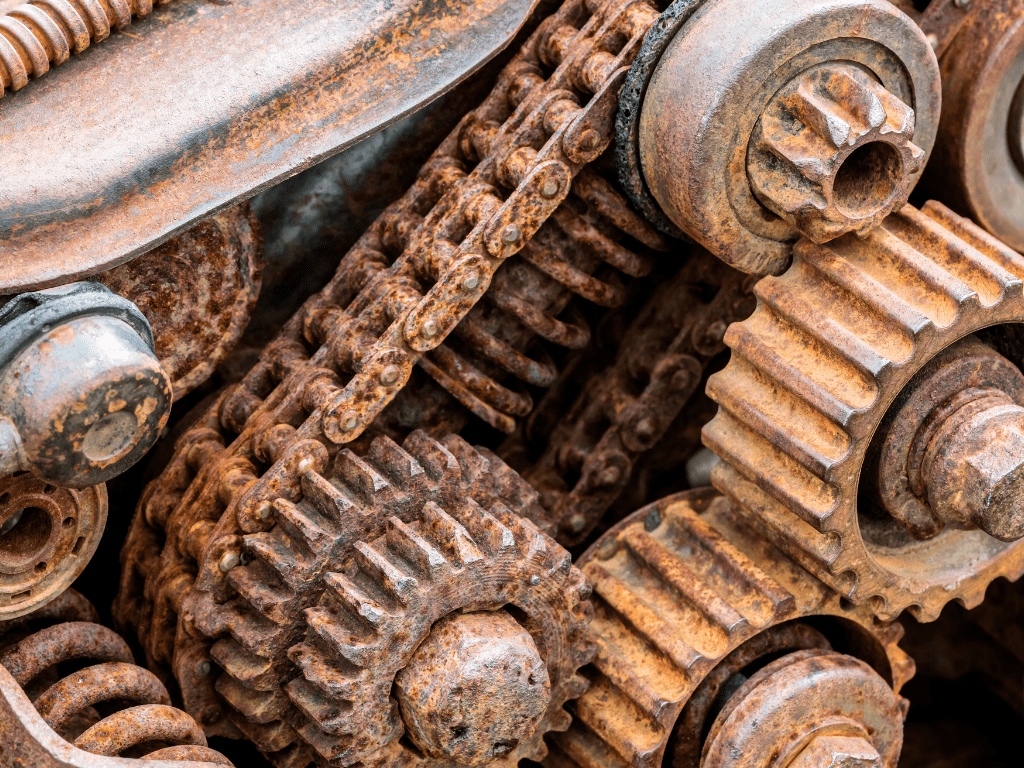
A pre-cleaning inspection allows you to identify any worn-out or damaged parts. Look for:
- Leaks in hydraulic hoses
- Broken components
- Loose nuts and bolts
Identifying and addressing these issues before cleaning prevents further damage and ensures a safer cleaning process.
Step 2: Removing Loose Dirt and Debris
Cleaning Tools Needed: Air compressor, brush, or a blower
Use an air compressor or a blower to eliminate loose dirt and dust from the machinery’s surface. Start from the top and work your way down, focusing on hard-to-reach areas. Brushing can also help dislodge stubborn dirt from joints and crevices.
Tips for Effective Dirt Removal
- Pay attention to the undercarriage and tracks where debris often accumulates.
- Use long-handled brushes to reach into tight spaces without disassembling equipment.
Step 3: Applying a Degreaser to Break Down Tough Grease
Heavy equipment often collects stubborn grease that regular water and soap cannot remove. This is where a high-quality degreaser, like AQUAQUICK 2000, comes in handy.
Choosing the Right Degreaser
A degreaser is essential for breaking down the layers of oil and grease on heavy equipment. AQUAQUICK 2000 is a powerful, eco-friendly degreaser that provides exceptional cleaning capabilities for industrial tools and machinery. Its highly concentrated formula dissolves hard-to-remove substances effectively, restoring equipment to optimal working condition.
How to Apply the Degreaser
- Dilute as Needed: Check the manufacturer’s instructions to determine the correct dilution ratio for AQUAQUICK 2000.
- Spray on Grease-Prone Areas: Focus on areas like the engine, hydraulics, and tracks.
- Allow Time to Soak: Let the degreaser sit for 10-15 minutes to break down the grease.
By using a reliable product like AQUAQUICK 2000, you’ll be able to dislodge oils, grime, and even filling compounds that affect your equipment’s performance.
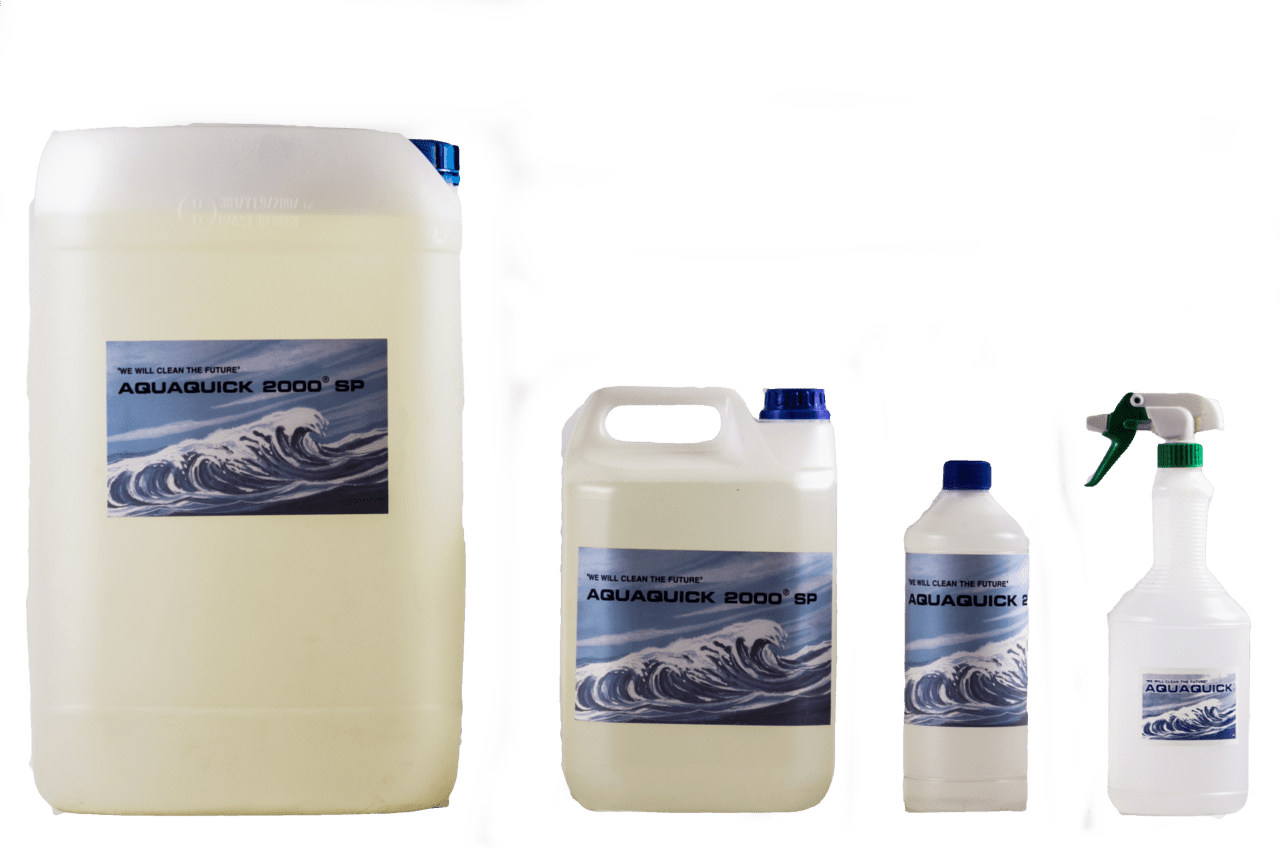
Step 4: Pressure Washing
Cleaning Tools Needed: Pressure washer with adjustable nozzle
Pressure washing is a quick and effective method for removing degreaser residue and other contaminants. Follow these steps to pressure wash your equipment correctly:
Selecting Pressure Settings
- Use a low to medium pressure setting to avoid damaging sensitive parts.
- Adjust the nozzle to a fan spray for broader coverage.
Pressure Washing Steps
- Begin from the Top: This ensures that water flows down naturally, rinsing away dirt.
- Focus on Heavily Soiled Areas: Pay attention to high-traffic zones, like the undercarriage.
- Avoid Sensitive Components: Steer clear of electrical connections, hydraulic systems, and air filters.
After pressure washing, allow the equipment to dry for a few minutes before moving to the next step.
Step 5: Detailing and Spot Cleaning
Heavy equipment may have stubborn spots that require more detailed cleaning. This process ensures no residue is left behind.
Tools for Spot Cleaning
- Soft Brushes: For intricate parts, such as around the engine and within vents.
- Microfiber Cloths: These are ideal for wiping down surfaces, leaving them clean and streak-free.
Use a small amount of AQUAQUICK 2000 on tough spots that remain after pressure washing, as it works effectively even on concentrated contaminants. Gently scrub with a soft brush, then wipe with a cloth for a polished finish.
Step 6: Rinsing and Drying
After detailing, rinse off any remaining cleaning solution to ensure no residue is left. Use clean water to rinse and then allow the machinery to dry thoroughly.
Drying Tips
- Use a blower to remove water from crevices.
- For large equipment, allow 30-60 minutes for air drying, depending on the weather conditions.
Step 7: Applying a Protective Coating
Applying a protective coating helps shield your equipment from future contamination and corrosion. This step is especially beneficial for equipment exposed to harsh outdoor environments.
Protective Coating Options
- Wax: Adds a layer of protection and enhances the appearance of metal surfaces.
- Anti-Corrosion Spray: Ideal for equipment stored outdoors.
Follow the manufacturer’s instructions when applying these products, and avoid sensitive parts like windows and gauges.
Step 8: Final Inspection and Maintenance Check
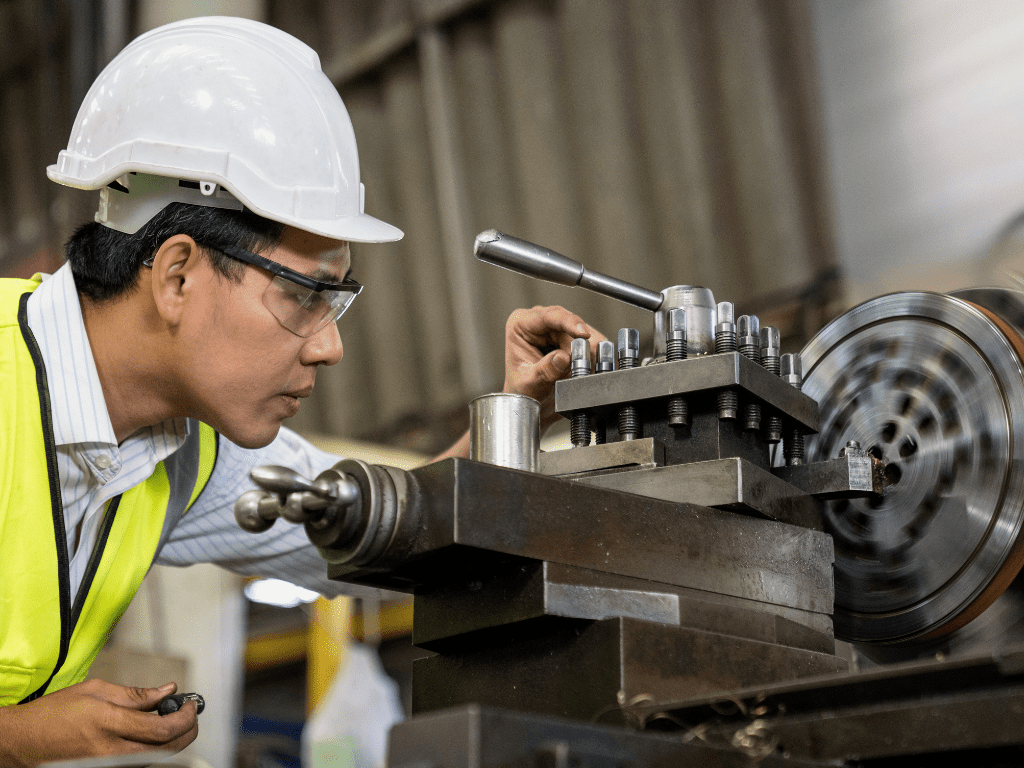
After cleaning, conduct a final inspection to ensure the equipment is in optimal working condition:
- Check Fluid Levels: Look at hydraulic, coolant, and oil levels.
- Inspect Tires and Tracks: Check for any accumulated debris that may have remained hidden.
- Examine Electrical Components: Ensure they are dry and in working order.
Tips for Keeping Heavy Equipment Clean for Longer
Heavy equipment requires ongoing maintenance, and implementing a routine can significantly reduce the buildup of dirt and grease.
Routine Cleaning Tips
- Clean After Each Use: If possible, rinse off dirt after each use, especially on muddy or dusty job sites.
- Regular Inspections: Monthly inspections can catch potential issues early.
- Invest in Quality Cleaning Agents: Products like AQUAQUICK 2000 simplify the cleaning process, ensuring thorough removal of contaminants and extending equipment life.
Best Practices for Cleaning Heavy Equipment Safely and Effectively
Cleaning heavy equipment can be a challenging task, especially if done improperly. Adhering to best practices ensures the cleaning process is both safe and effective.
Use Appropriate Equipment for the Job
- Adjust Pressure Washers Carefully: Too much pressure can damage parts, while too little may not be effective. Adjust according to the equipment’s surface and material.
- Select Brushes Wisely: Use soft-bristle brushes for sensitive areas and stiffer brushes for heavily soiled parts.
- Consider Environmental Regulations: Use biodegradable cleaners like AQUAQUICK 2000 to minimize environmental impact, as this cleaner is effective yet safe for many applications.
Practice Environmental Responsibility
Heavy equipment cleaning can release contaminants, so it’s crucial to follow environmental safety guidelines:
- Contain and Dispose of Wastewater: Set up barriers to contain wastewater runoff and ensure proper disposal according to local environmental regulations.
- Choose Eco-Friendly Products: AQUAQUICK 2000, for example, is formulated to be eco-friendly, making it suitable for industries looking to reduce their environmental footprint.
Benefits of Using AQUAQUICK 2000 for Heavy Equipment Cleaning
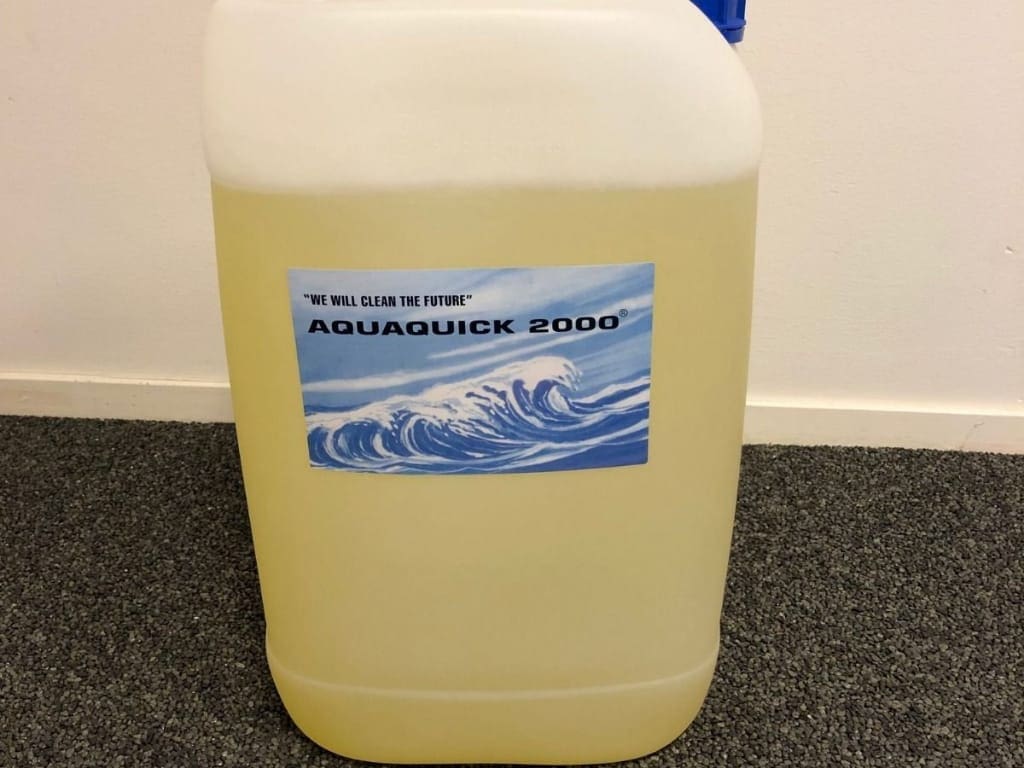
AQUAQUICK 2000 stands out as a versatile and powerful cleaner for a wide range of industrial applications. Here’s why it’s a top choice for heavy equipment cleaning:
- High Concentration for Efficiency: AQUAQUICK 2000’s concentrated formula means a small amount can cover a large area, making it an economical choice.
- Powerful Degreasing Action: Its unique formulation effectively dissolves grease, oil, and grime that accumulate on heavy equipment, ensuring machinery remains in peak operating condition.
- Safe for Various Industries: AQUAQUICK 2000 is used across sectors like aerospace, military, and oil extraction, where equipment cleanliness is critical to performance.
- Eco-Friendly Solution: Its biodegradable nature ensures that while it’s tough on grime, it’s gentle on the environment, making it suitable for companies focused on sustainability.
For those who maintain heavy machinery, AQUAQUICK 2000 provides an efficient cleaning solution that tackles even the most challenging contaminants without compromising the equipment’s longevity or the environment.
Frequently Asked Questions About Cleaning Heavy Equipment
Q: How often should heavy equipment be cleaned?
A: This depends on the equipment’s usage and the environment. For heavily used equipment in dirty environments, a weekly or bi-weekly clean is recommended, while equipment used less frequently may need monthly cleaning.
Q: Can I use household cleaning agents on heavy equipment?
A: Household cleaners are generally not strong enough for heavy machinery and may leave residues. Industrial-grade cleaners like AQUAQUICK 2000 are designed specifically to handle the high levels of grease and grime on heavy equipment.
Q: Is it safe to use pressure washers on all equipment parts?
A: While pressure washers are effective, they should be used carefully, especially around sensitive parts like electrical components and hydraulic systems. Adjust the pressure and use fan nozzles to reduce direct impact on delicate areas.
Q: What are the benefits of using an eco-friendly cleaner for heavy equipment?
A: Eco-friendly cleaners minimize environmental impact, meet regulatory standards, and reduce risks to operators. AQUAQUICK 2000, for instance, is biodegradable, making it a responsible choice for industries looking to maintain eco-friendly operations.
Conclusion
Keeping heavy equipment clean is essential for safe operation, longevity, and efficiency. Following a structured cleaning process and using reliable products like AQUAQUICK 2000 ensures that your machinery remains in excellent condition. With a robust degreasing action, high concentration for cost efficiency, and environmentally friendly formulation, AQUAQUICK 2000 is an ideal solution for various industries reliant on heavy equipment.
By adhering to these cleaning steps and best practices, you can enhance your equipment’s performance and avoid costly repairs. Regular cleaning not only preserves the appearance of machinery but also keeps it functioning optimally in demanding conditions.














